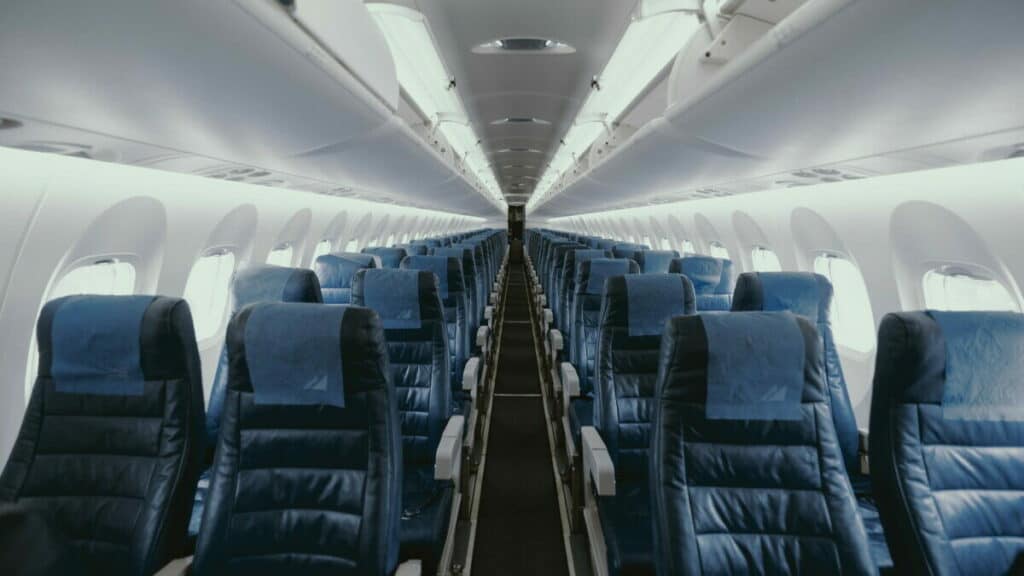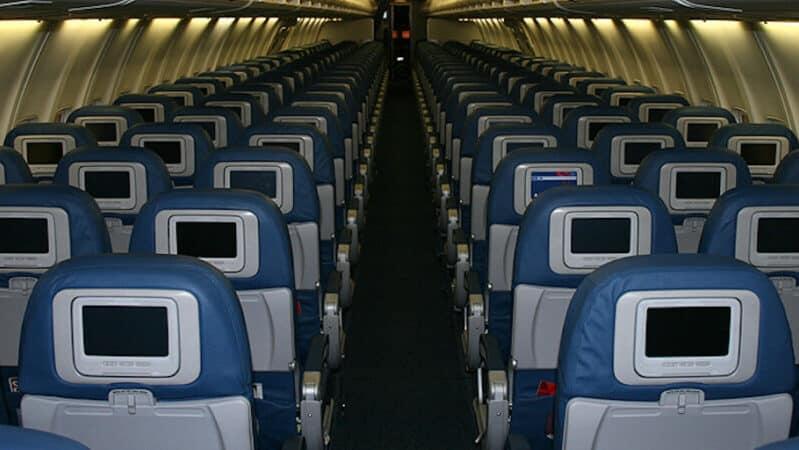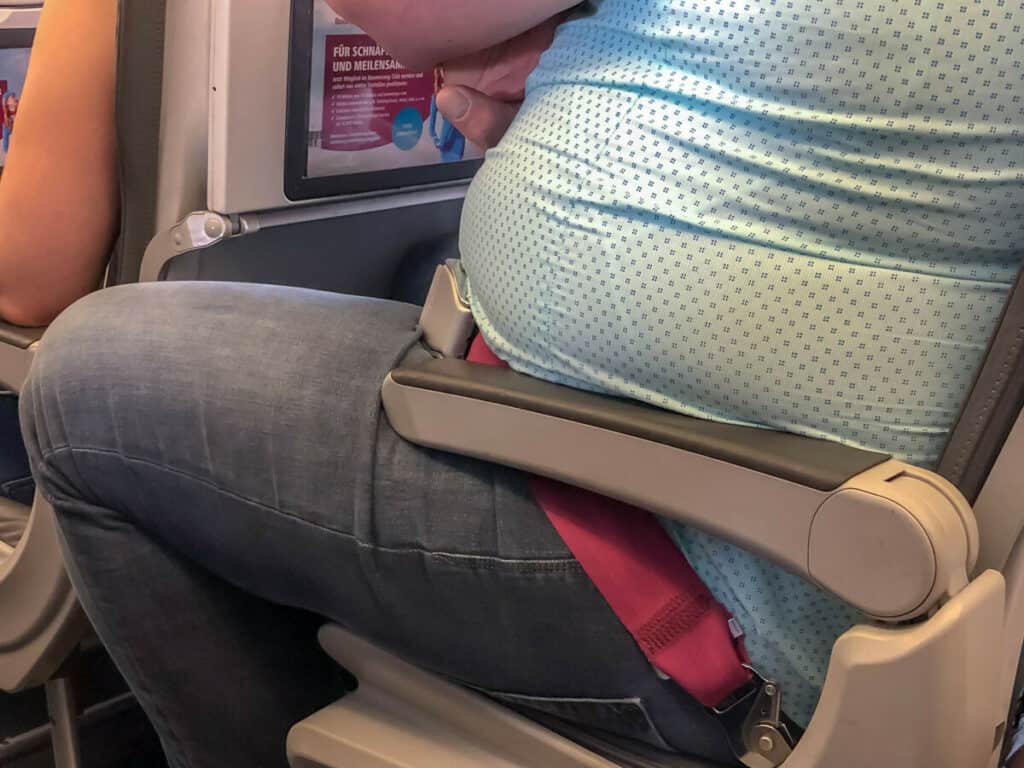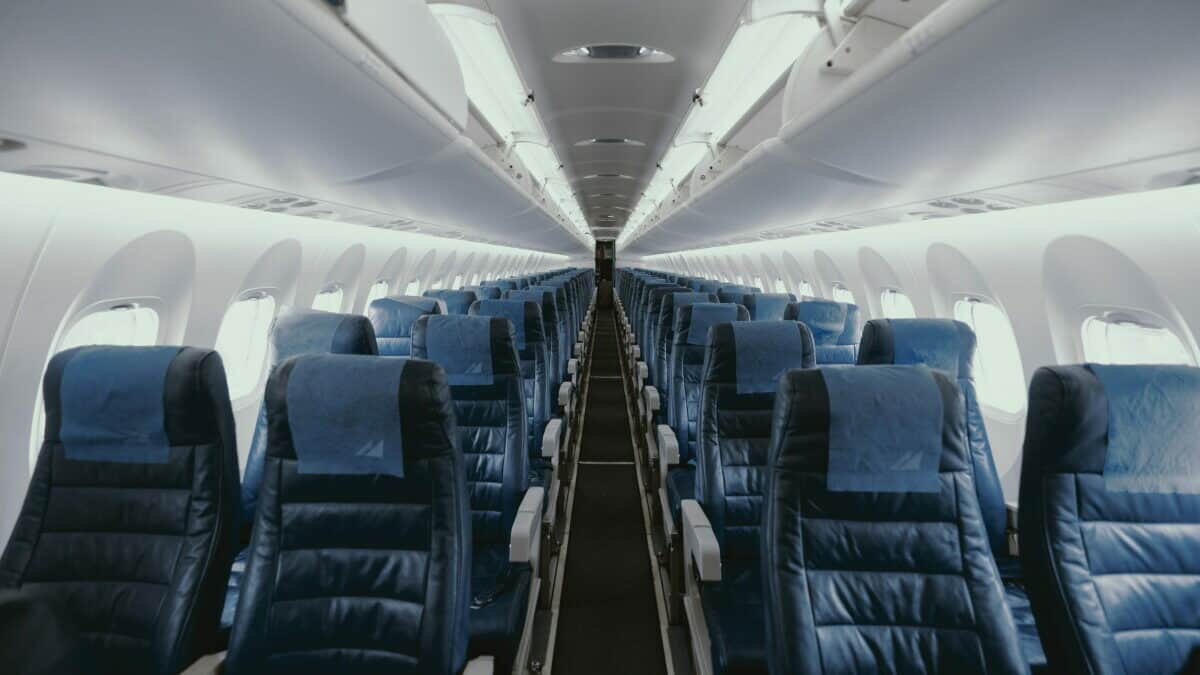
Airline seats are not created equal!
If you’re a seasoned traveler planning a trip by air, you are probably interested in booking flights on the most comfortable aircraft that you can. While this may not always be possible, sometimes you may be able to choose between a smaller regional jet or a mainline, full-size aircraft, when flying domestically. Narrowbody aircraft are now being flown on long-haul routes from coast-to-coast, and even between North America and Europe.
For example, given the choice, would you prefer to fly from New York to London on a two-aisle wide-body (8-10 seats across) where you can get up and stretch your legs while en route, or a single-aisle A321 (3 x 3 seating), where anytime you’re out of your seat, you are blocking the aisle?
The cabin’s width and layout can also be of prime importance when it comes to personal comfort. For example, a wide-body A330 features a seating configuration in economy of 2-4-2. This means that all passengers are never more than one seat away from an aisle, and there are no middle seats.
When flying on the A321 or Boeing 737MAX, both of which are configured 3-aisle-3, one-third of the seats on both aircraft are middle seats, and one-third of passengers who have a window seat will always have to climb past two adjacent passengers just to reach the aisle.
While the size of the aircraft cabin may not be critical to an ‘average’ size person, or someone who is shorter, it can make a major difference to a tall or wider traveler.
Let’s take a closer look at some of the more popular aircraft, comparing their seat width, pitch (this means how much legroom you’ll have) – as well as aisle width. As you’ll see, interior cabin dimensions vary from airline to airline, aircraft type to aircraft type, and between various models of the same aircraft.
Since we all know that the First Class and Business Class cabins will be comfortable for nearly all travelers, with their wider, plusher seats, our research for this article focused on the various Economy Class configurations you may encounter on your next flight.
How Wide Are Airplane Seats?
The widest economy seats in the U.S. and Canada are offered by Jet Blue at 18.4″
The widest premium economy seats will be found on Air Canada at 20″, Delta at 18.5″ and American Airlines at 19″.
Most airline seats on the same aircraft type are very close to the same width. However, a difference of just a half-inch can make a real difference between feeling comfortable or squeezed in tight.
According to SeatGuru, a website that provides seat maps for scores of aircraft types being flown by airlines around the world, the narrowest seats aboard U.S. and Canadian airlines will be found on United, Southwest, and Sun Country Airlines.
How Much Legroom is there on Passenger Airplanes?
On average, legroom (pitch), ranges from 31 to 32 inches. However, some airlines, primarily ultra-low-fare carriers like Frontier, Spirit, Allegiant, and Sun Country are as tight as 27 inches; while others offer premium seat pitch as high as 35 inches.
This is an enormous differential, which can make for a very comfortable, or highly uncomfortable flight.
Another important consideration is how far will your seat of choice recline, if at all. Again, the low-fare carriers are known for ‘slim-line seats’ that don’t recline and are less plush, to be sure.
The mainline carriers typically feature economy seats that recline three inches, while their premium economy seats recline up to five inches.

How Wide Are Airplane Aisles?
Federal Aviation Regulations (FARs), section 25.815, specifies that aircraft with 20 or more seats must have an aisle width of no less than 15 inches, from the floor up to 25 inches in height. Above 25 inches from the floor, the aisle width must be a minimum of 20 inches.
Since all Boeing and Airbus aircraft have more than 20 seats, as do regional jets such as the Embraer 175 and CRJ 900, it is safe to assume that the aisle width in their economy-class cabins meets or exceeds these minimums.
First and Business Class cabins typically offer somewhat wider aisles for the comfort and convenience of travelers paying higher fares to sit “in the front of the bus”.
While each airline determines what the seat pitch will be in their various cabin categories, i.e., first, business, premium economy, and economy, there is little variance possible when it comes to seat width. However, the type of aircraft that you are booked on will greatly influence your comfort level, depending on the overall width of the cabin.
Below are cabin specifications for some popular aircraft:
| Aircraft | Cabin Width | Cabin Height | Seating Configuration |
|---|---|---|---|
| ERJ 170/190 | 9 ft./108 in. | 6 ft. 6 in. | 1-2 F class/2-2 economy |
| CRJ 700/900 | 8.5 ft./102 in. | 6 ft. 2 in. | 1-2 F class/2-2 economy |
| Boeing 737 | 11 ft.7 in./139 in. | 7 ft. 1 in. | 2-2 F class, 3-3 economy |
| Airbus A320 | 12 ft. 2 in./146 in. | 7 ft. 4 in. | 2-2 F class, 3-3 economy |
| Airbus A321 | 12 ft. 2 in./146 in. | 7 ft. 4 in. | 2-2 F class, 3-3 economy |
| Boeing 757 | 11 ft. 7 in./139 in. | 7 ft. 0 in. | 2-2 F class, 3-3 economy |
| Boeing 767 | 15 ft. 6 in./186 in. | 7 ft. 9 in. | 1-2-1 B class, 2-3-2 economy |
| Airbus A330 | 17 ft. 4 in./208 in. | 8 ft. 6 in. | 2-2-2 B class, 2-4-2 economy |
| Boeing 777 | 19 ft. 7 in./234 in. | 7 ft. 9 in. | 1-2-1 F class, 2-4-2 B class, 3-4-3 economy |
| Airbus A350 | 18 ft. 5 in./221 in. | 8 ft. 6 in. | 1-2-1 F class, 2-4-2 Prem., 3-3-3 economy |
| Boeing 787 | 18 ft. 0 in./216 in. | 7 ft. 6 in. | 1-2-1 B class, 3-3-3 Prem., 3-3-3 economy |
Airplane Seat Recommendations for Tall and Large Travelers
Given the many variables when choosing a seat on a flight, here are some recommendations for travelers who are either tall or larger than your “average” person.
Airplane Seat Recommendations for Taller Travelers (Over 6 feet):
- ERJ, CRJ, and other regional jet or turboprop aircraft – upgrade to F class or premium economy/comfort+, where you’ll gain additional legroom. Other options include choosing a bulkhead seat or one in an exit row. The disadvantage of a bulkhead seat is that you may not have a seat in front of you to store carry-on luggage.
Be aware that elite members of the airline’s frequent flyer program stand a much better chance of obtaining the most desirable seats. Regional jets and smaller commercial aircraft have smaller overhead compartments, so you may want to pack lightly and travel with a smaller bag, or consider checking luggage that may not fit in the overhead.
Emergency row seats provide extra legroom but typically do not recline as much as a standard seat. Watch your head when getting up or into your seat, as the overhead compartments are lower on these aircraft.
- Narrowbody, full-size aircraft (737, A320, 757, etc.) – choose a bulkhead or exit row seat. Upgrade to premium economy or first class. Choose an aisle seat for extra room to stretch out when the aisle isn’t busy.
- Widebody aircraft – choose a bulkhead or exit row seat. Upgrade to premium economy, business, or first class, though the latter will be pricey. Choose an aisle seat for extra room to stretch out when the aisle isn’t busy.

Join My Newsletter & Get Great Tips, Information and Experiences To Help You Become a Superb Pilot!
Airplane Seat Recommendations for Larger Travelers (Heavier, Wider):
When possible, avoid traveling on regional CRJ/ERJ-type aircraft. You can easily determine what type of aircraft is flying on your chosen flight on the airline’s website. It really doesn’t matter what make or model of regional jet or large turboprop aircraft you are flying on.
Overweight travelers will be uncomfortable squeezing into the seats on these aircraft. If you must ride on one of these aircraft, premium economy, and first class will be more comfortable for you, as will bulkhead, exit row, and aisle seats.
DO NOT choose a window seat if you are a larger person, as you will be in a very tight position for the duration of the flight.
When traveling on a full-size narrowbody aircraft, bulkhead and exit row seating will be the most comfortable options. And it goes without saying that an aisle seat is a much better choice than a middle or window seat. If you have a few extra bucks, we highly recommend upgrading yourself to premium economy, where you’ll gain some extra legroom.
Do Airlines Require Large Passengers to Purchase Two Seats?

Each airline makes its own rules of how to manage a situation where a passenger cannot fit into a single seat on the aircraft. Usually, a gate agent, or agents, sometimes along with the cabin crew’s input, decide how to accommodate a large or overweight traveler.
General guidelines say that each passenger must fit between the armrests of the seat to which they are assigned. However, not all body types are the same, and there are times when the passenger may fit into the seat, but their shoulder width is just too wide, causing a problem with the person(s) seated next to them.
Many airlines will require an overly large person to purchase a second seat if there is one available. Others, like Delta, do not require a second seat to be purchased but may move the traveler to a later flight where they have some open space to handle the situation.
Southwest says that they will provide a second seat at no additional charge, subject to availability. According to Alaska Airlines, if a second seat is necessary and available, they will charge the advance purchase fare rather than the going rate at the moment, in an effort to save the passenger some money.
There are no federally mandated weight restrictions, and airlines do not have any either. It’s all about the size of the traveler, aircraft type, and cabin layout. However, whether a very large person occupies one seat or two, they will almost certainly require a seatbelt extender in order to be safely buckled in.
Airlines usually carry at least one seatbelt extender onboard each aircraft, but be sure to check with the gate agent before boarding to be sure.
NOTE: United Airlines requires a pre-reservation for a seatbelt extender.
How Long Are Airline Seatbelt Extenders?
Here is some useful information regarding seatbelt extenders for many common airlines:
| Airline | Seat Belt Length | Extenders | Extender Length |
|---|---|---|---|
| Alaska Airlines | 46 in. | Yes | 22 in. |
| Allegiant Air | 40 in. | Yes | 21 in. |
| American Airlines | 45 in. | Yes | 25 in. |
| Delta Airlines | 35 – 38 in. | Yes | 12 in. |
| Hawaiian Airlines | 51 in. | Yes | 20 in. |
| Jet Blue | 42 – 49.5 in. | Yes | 25 in. |
| Soutwest Airlines | 39 in. | Yes | 24 in. |
| United Airlines | 31 in. | Pre-Reserve | 25 in. |
Can I Use My Own Seatbelt Extender?
Passengers are not permitted to provide their own seatbelt extender. Airlines are responsible for the safety of each passenger, and that includes providing seat belts that are regularly inspected for proper operation.
Passengers trying to use their own seatbelt extender may encounter issues, especially if the airplane’s seatbelt extender has been reserved or issued for the flight.
Where Can I Find Detailed Aircraft Cabin Information?
With scores of aircraft types flying globally, each with numerous cabin configurations, it’s difficult to know with certainty what the aircraft you’re going to be flying on looks like on the inside. These websites offer detailed schematics, by airline and aircraft, to assist with choosing where you’re like to sit on upcoming flights.
Further Reading
If you found this information useful, you may also like these articles too:


